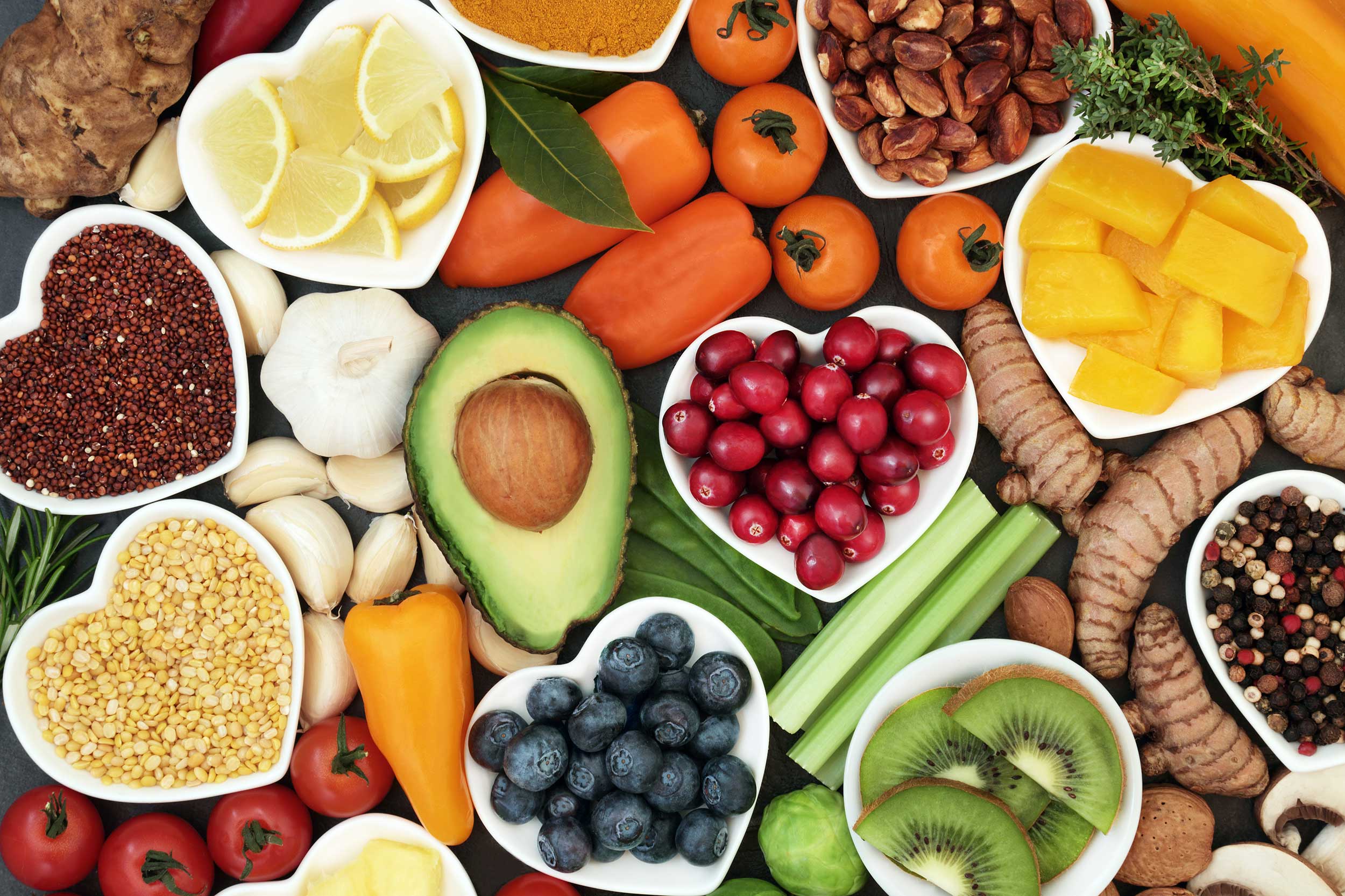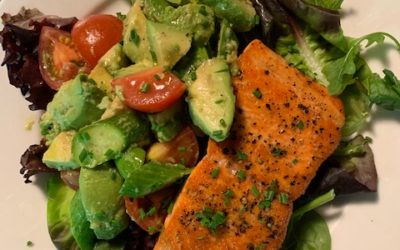I am often asked by clients who are strapped for time, ‘what are your top priorities when it comes to lifestyle change – what will make the biggest impact’? Well, after a lot of thought, internal debate and cross offs, I have finally landed on my list of what I affectionately call my Top 5 Lifestyle Strategies that I feel will not only help you survive but also thrive in your life this year. Read on to assess how well you are doing in each of the areas.
Sleep Optimization
Did you know that according to the CDC, 1 in 5 adults reports not getting enough sleep? What’s enough you ask? The American Academy of Sleep Medicine recommends 7-9 hours a day for adults 18 and up. Sleep is when we repair physically and cognitively. In fact, just one night of shortened sleep (<7 hours) has a huge impact on our metabolism and weight, making it one of the most detrimental lifestyle choices we make each day. Another fact: shift workers have the highest risk for certain cancers, GI issues, and obesity since they work against their body’s natural circadian rhythms when it comes to their sleep. And no…you can’t make up for lost sleep from the week on the weekend.
Why is sleep loss so important? It has been linked to an increased risk for heart and kidney disease, high blood pressure, stroke, diabetes, obesity, and depression to start.
We go through 3-5 cycles of non-REM (deep) & REM (dream) sleep stages during the night:
- Non-REM (deep) sleep is for our physical repair and it dominates during the earlier part of the night, particularly before midnight. This is when our tissues heal and repair, our hormones re-balance, and our immunity strengthens.
- REM (dream) sleep is for our cognitive repair and it dominates during the later part of the night, closer to the time we awaken for the day. This is when we form new neurological pathways to boost memory, learning, decision making, emotions and behavior.
Here are some tips to get you started on optimizing your sleep:
- Establish a consistent bedtime routine, even on the weekends, to achieve no less than 7 hours of sleep nightly.
- Timing is everything! Our non-REM stages of sleep, for physical repair, predominate before midnight so strive for ‘lights out’ before that time, ideally closer to 9 or 10 pm.
- Limit your exposure to bright, artificial ‘blue’ lights (TV, computer, phone, iPad, digital alarm clock) for at least 1-2 hours before bed. These stimulate cortisol & decrease melatonin levels.
- Avoid stimulants before bed, such as caffeine, tobacco, alcohol, and even exercise.
- Focus on ‘calming’ activities if sleep is a struggle – epsom salt bath with lavender oil, yoga nidra meditation (changes our brain waves), or gratitude journaling.
- Consider melatonin supplementation – our levels lower naturally as we age. Opt for the sustained release form and slowly increase the dosage to find what works best for you.
- Keep your bedroom as cool and dark as possible. Trial out ear plugs or white noise.
Hydration
Water is our most important nutrient. Without it, we can only survive 3-4 days vs 3 weeks without food. Water makes up over 60% of our body and up to 75% of our brain. Every cell, tissue, and organ requires it to function as water helps deliver oxygen and nutrients to our cells, removes wastes, maintains body temperature, and lubricates and cushions our joints.
I’m always asked ‘How much should I drink?’ Well, that’s not an easy question to answer. The scientific evidence is lacking with the best recommendations fully customized based on one’s health status (fever, illness), activity level, and climate where they live. What you need to know is you lose water every day through urine, stool, sweat, and even your breath. A good gauge is your urine color should be clear to light yellow in color. Now, beware. If you are taking a multivitamin with B vitamins or a B complex, you may see that neon yellow color which just indicates you are excreting what your body can’t absorb.
Another question I am asked is what source of water they should drink. This is a great question as our water is constantly exposed to pollutants – anything in the ground or air can end up in your water. This might be bacteria, lead, mercury, iron, chloride, or pharmaceuticals like oral contraceptives and anti-depressants to name a few. If you decide to have your water tested, do it from your own tap vs relying on the municipal report. This contaminated water has to travel through your pipes, which is a whole other factor to consider. The good news is there are many easy, affordable filtration systems for your water supply. And don’t forget your showers or baths as you ‘consume’ much more water in a shower than you do drinking a glass of water. Your skin is your largest organ and soaks up the water it is immersed in during your daily clean up routine.
Here are some tips to get you started on optimizing your hydration:
- Strive for drinking enough water through the day that allows you to ‘have to go’ (not because it’s convenient) to the bathroom ~4 times and your urine is light yellow to clear in color.
- Assess what you are adding to your water. This one never ceases to amaze me. It’s like a black hole in that many of my clients never even think to tell me what they are adding to their water (because they don’t like the taste of water) until months into our coaching program. Make sure to ditch any sugar, artificial sweeteners, colors, dyes, etc. Even natural sweeteners, like Stevia, can trick the body to think you had sugar and set off the release of your ‘fat storage hormone’ insulin. Opt for a slice of lemon, lime, or cucumber instead.
- Make sure to drink from glass or stainless steel only. No plastic, which mimicks estrogen and who needs more estrogen?
- Consider filtration systems – you can purchase and install an under-sink or countertop system on your own or rent a system from a local water company. Opt for reverse osmosis or Berkey.
Eat more Plants in a ‘Rainbow’ of Color
Did you know that only 1 in 10 adults gets at least 2 servings of fruit and 3 servings of veggies daily (which is primarily potatoes, to boot)? To complicate matters even more, the NHANES data shows 8 in 10 Americans fall short in EVERY color category. Science repeatedly boasts the benefits of eating colorful plants for reducing one’s risk of chronic health conditions and disease. When I talk about Food being Medicine, this is what I am talking about. The powerful antioxidants and phytochemicals found in these colorful plants are what help neutralize the damage coming from the stressors we are exposed to on a daily basis like pollution, the ozone layer, excess alcohol or tobacco usage, high sugar and processed fat diets, solvents and chemicals found in our homes and yards, use of medications, and heavy metals. When we don’t neutralize this damage, we increase our risk for conditions like diabetes, neurodegenerative disorders, heart or respiratory disease, autoimmune conditions, inflammatory conditions and cancer to name a few.
Here are some tips to get you started on optimizing your intake of plants:
- Make them a priority at EVERY meal – shoot for 50% of your plate coming from colorful plants. Ideally, we want to consume 7-9, or more, servings daily.
- Due to sugar content, strive to get 3x more veggies than fruit.
- If you can financially afford it, go organic, otherwise follow the Environmental Working Group’s Dirty Dozen list to purchase at least those 12 crops organic. If organic is still out of your budget, fill your kitchen sink with water (hopefully filtered) and 1 C distilled vinegar. Soak your produce for 15 minutes, rinse, pat dry, and store in your fridge or freezer.
- Strive for the rainbow each day – each color represents different phytochemicals for different health benefits
- Red – beets, bell peppers, tomatoes, radishes (the watermelon radish is my favorite), pomegranate, cherries, strawberries, raspberries
- Orange | Yellow – carrots, bell peppers, pumpkin, winter squash, sweet potato, mango, apricots, orange, cantaloupe, lemons
- Green – artichoke, asparagus, broccoli, bok choy, brussel sprouts, cabbage, celery, leafy greens, kale, avocado, limes
- Blue | Purple – cabbage, eggplant, blueberries, blackberries, grapes, plums
- White | Tan| Brown – cauliflower, garlic, jicama, mushrooms, onions, shallots, apples, coconut, pear
Increase your Fiber
The average adult eats 15 gms fiber in a day with only 5% of the population reaching the recommended goals of 25 gms for women or 38 gms for men. Why, you ask? We live in a convenient, processed world which rips the fiber right from the food. Getting enough fiber in our diet helps optimize digestive health, prevents constipation, reduces one’s risk for colon cancer as well as heart disease and diabetes, and helps manage weight by providing a ‘satiety’ factor.
There are 2 forms of fiber
- Soluble – dissolves in water to form a gel in the large intestine and helps lower blood sugar and cholesterol levels
- Oats, legumes | beans, apples, citrus fruits, barley, & psyllium
- Insoluble – increases the bulk of your stool to help remove wastes from the digestive tract (what you don’t remove daily gets reabsorbed back into your body – yuck!)
- Whole wheat, bran, nuts, beans/legumes, vegetables
Now one caveat to these fiber sources is lectins. These can be troublemakers by disrupting your cell’s communication and knicking holes in your intestinal barrier, making it more ‘leaky’. This could ultimately result in more toxic and inflammatory reactions in your body. So, what are lectins anyway? They are large ‘sticky’ proteins found in plants whose role is to protect and defend against predators in nature to insure their ability to survive and reproduce. Which plant foods are high in lectins?
- Beans | legumes, soy, corn, wheat, and most other grains
- Nightshade vegetables – tomatoes, potatoes, eggplant, & bell peppers
- Don’t forget the fact that you eat what the animal you eat, eats. In this case, conventionally – raised animals that feed on corn and soy.
- Processed foods – the cheapest ingredients to use is food manufacturing are corn and soy, so you will find these ingredients prevalent in processed, packaged foods.
Here are some tips to help you optimize your fiber intake:
- Start slow, and make sure to drink plenty of water to help bulk up your stool for easy elimination and less cramping.
- As mentioned above, strive for 50% of your plate coming from colorful plants.
- Opt for whole foods vs processed, packaged foods. For example, wheat berries or buckwheat vs whole wheat bread or pasta.
- If you use oats, opt for organic gluten free to avoid the glyphosate (Roundup) chemical that is heavily sprayed on this crop.
- If you suspect trouble with lectins, trial a month off them to see how your body does. Also note that pressure cookers (my favorite kitchen appliance – the Instant Pot) can help break down the lectin layer in these foods.
Daily Mindfulness
According to the American Psychological Association, 3 in 4 Americans regularly experience physical and psychological symptoms caused by stress. 1 in 3 are living with extreme stress. The top causes of stress reported were job pressure, money, health, relationships, poor nutrition, media overload, and sleep deprivation. Sound familiar??
When we are under stress, we activate the ‘fight or flight’ response. The problem is that our stressors today are more intellectual/emotional (or unknown like a virus, infection, chemical exposure) vs physical so our body doesn’t need to follow through with the physical movement of ‘fighting’ or ‘flighting’. However, the body doesn’t know how to change it’s response so it still prepares for it by releasing stress hormones (adrenaline and cortisol), which then triggers the release of glucose to fuel the muscles to FIGHT or FLIGHT, which further triggers insulin to drive this glucose into the muscles. So basically, if we don’t use it, we store it. Insulin is our fat storage hormone plus we have 4x more receptors for cortisol in our belly. Wonder why you are gaining weight around your midsection?
This stress response occurs in the part of our nervous system called the ‘sympathetic nervous system’, which acts like the accelerator of a car. This tends to be more of an automatic response – we wake up, put our feet on the ground and GO until our head hits the bed at night. If we continually hit the accelerator in our life, we eventually break our systems down – bones, muscles, immunity.
The opposite response is the rest, digest, & grow response, which occurs in the part of our nervous system called the ‘parasympathetic nervous system’ or the brake of the car. This system needs to be consciously and intentionally activated.
Here are some tips to help you optimize your mindfulness:
- Your mind is much stronger than your physical body & deserves training too. We need to make this a priority every day!
- There are a variety of Mindfulness tactics you can try. Trial a variety & find one or more that works best for you:
- Meditation
- Deep breathing
- Imagery
- Progressive relaxation
- Gratitude journaling
- Prayer
- Start small. There’s nothing harder than trying to calm a pinball brain. Start with as little as 3 minutes a day & work up to 20 or more minutes daily. It’s the daily practice that will help re-wire the circuits in your brain and make a difference health and wellness wise.
- Pick the time of day that works best for you based on you and your families’ schedule AND when you need it most. If your day is the most stressful, carve out time in the AM. If you struggle with sleep, carve out time in the PM before bedtime.
I hope these 5 strategies are helpful for you in 2019. Remember to tackle only one at a time to assure success. Start small and set realistic, attainable goals to get you to your end goal. When you master these 5 strategies know that you are well on your way to optimizing your weight, health, and overall wellness. Here’s to a happier and healthier new year!







